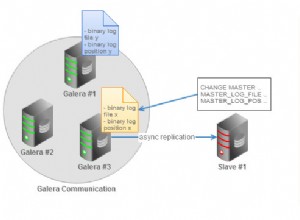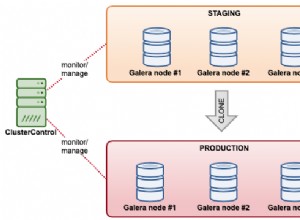Puoi ottenere il periodo di 30 giorni da SYSDATE come segue (presumo tu voglia includere SYSDATE ?):
WITH mydates AS (
SELECT TRUNC(SYSDATE) - 1 + LEVEL AS due_date FROM dual
CONNECT BY LEVEL <= 31
)
Quindi usa quanto sopra per fare un LEFT JOIN con la tua query (forse non è una cattiva idea inserire anche la tua query in un CTE):
WITH mydates AS (
SELECT TRUNC(SYSDATE) - 1 + LEVEL AS due_date FROM dual
CONNECT BY LEVEL <= 31
), myorders AS (
select
(case when trunc(so.revised_due_date) <= trunc(sysdate)
then trunc(sysdate) else trunc(so.revised_due_date) end) due_date,
(case
when (case when sp.pr_typ in ('VV','VD') then 'DVD' when sp.pr_typ in ('RD','CD')
then 'CD' end) = 'CD'
and (case when so.tec_criteria in ('PI','MC')
then 'XX' else so.tec_criteria end) = 'OF'
then sum(so.revised_qty_due)
end) CD_OF_VOLUME
from shop_order so
left join scm_prodtyp sp
on so.prodtyp = sp.prodtyp
where so.order_type = 'MD'
and so.plant = 'W'
and so.status_code between '4' and '8'
and trunc(so.revised_due_date) <= trunc(sysdate)+30
group by trunc(so.revised_due_date), so.tec_criteria, sp.pr_typ
order by trunc(so.revised_due_date)
)
SELECT mydates.due_date, myorders.cd_of_volume
FROM mydates LEFT JOIN myorders
ON mydates.due_date = myorders.due_date;
Se vuoi mostrare uno zero sulle date "mancanti" invece di un NULL , usa COALESCE(myorders.cd_of_volume, 0) AS cd_of_volume sopra.




